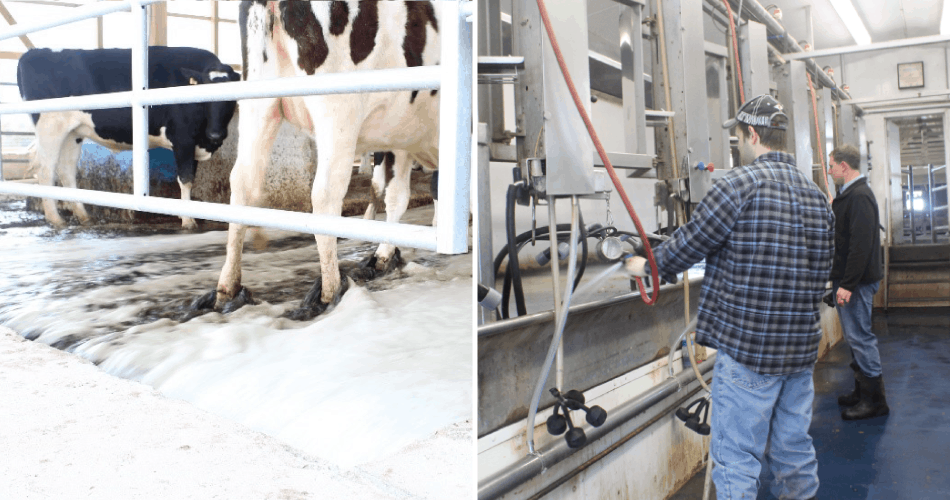Dairy farmers are the ultimate recyclers! Since they often live on or near the land they farm, caring for the environment is a top priority.
Here are some common ways dairy farmers are reducing waste, reusing resources and recycling trash into treasure.
Your old, worn-out car tires won’t go to waste thanks to the ingenuity of dairy farmers! Some farmers use recycled tires as weights to secure the plastic that preserves their crops after harvest or to help weigh down their calf hutches.

Water used to wash the milking parlor each day can be captured and reused to flush manure away in the barns, then recycled again to irrigate crop fields.

Milk is cooled to at least 45°F within two hours of milking to preserve quality. To do this quickly, some farms use plate coolers, which send cold water through a series of plates near the milk to cool it. That clean water can then be used as a fresh drinking source for the cows.

Life is just beachy at the farm thanks to sand bedding! Dairy farmers provide clean, dry bedding for their cows like sand, straw, mattresses or even waterbeds. Cows love sand because it’s comfortable and molds to their bodies! Farmers love it too, because it can be easily cleaned, which means it can be reused again and again.

Another bedding option for cows is recycled manure. By separating and drying the manure solids to use as bedding, farmers can reduce their farm’s waste. The cows can rest easy knowing that their clean and comfortable beds are also helping the environment!

Manure is a valuable resource! It is used as a natural fertilizer and spread on crop fields according to detailed nutrient management plans. These plans take into account the types of soil on the farm, the terrain of the fields, soil moisture levels and the amount of nutrients the next crop on that field will need.

Due to innovative practices like these, the environmental impact of producing a gallon of milk in 2017 shrunk significantly, requiring 30% less water, 21% less land and a 19% smaller carbon footprint than it did in 2007. In fact, data from a nationwide study indicates U.S. dairy is responsible for only 5.1% water use and less than 2% of the U.S. total carbon footprint.
Learn more about dairy farmers’ sustainable agriculture practices on our Environmental Stewardship page.

